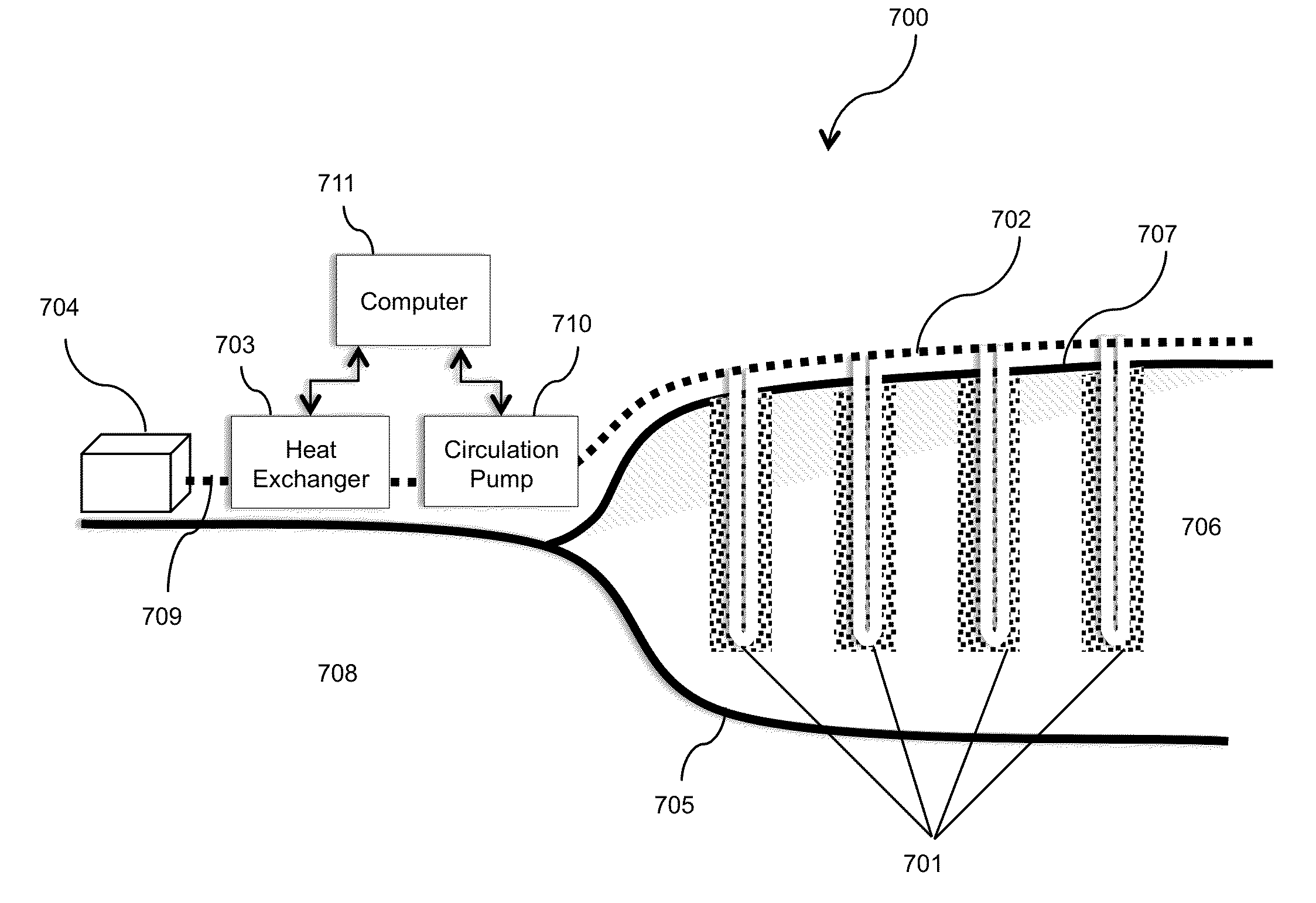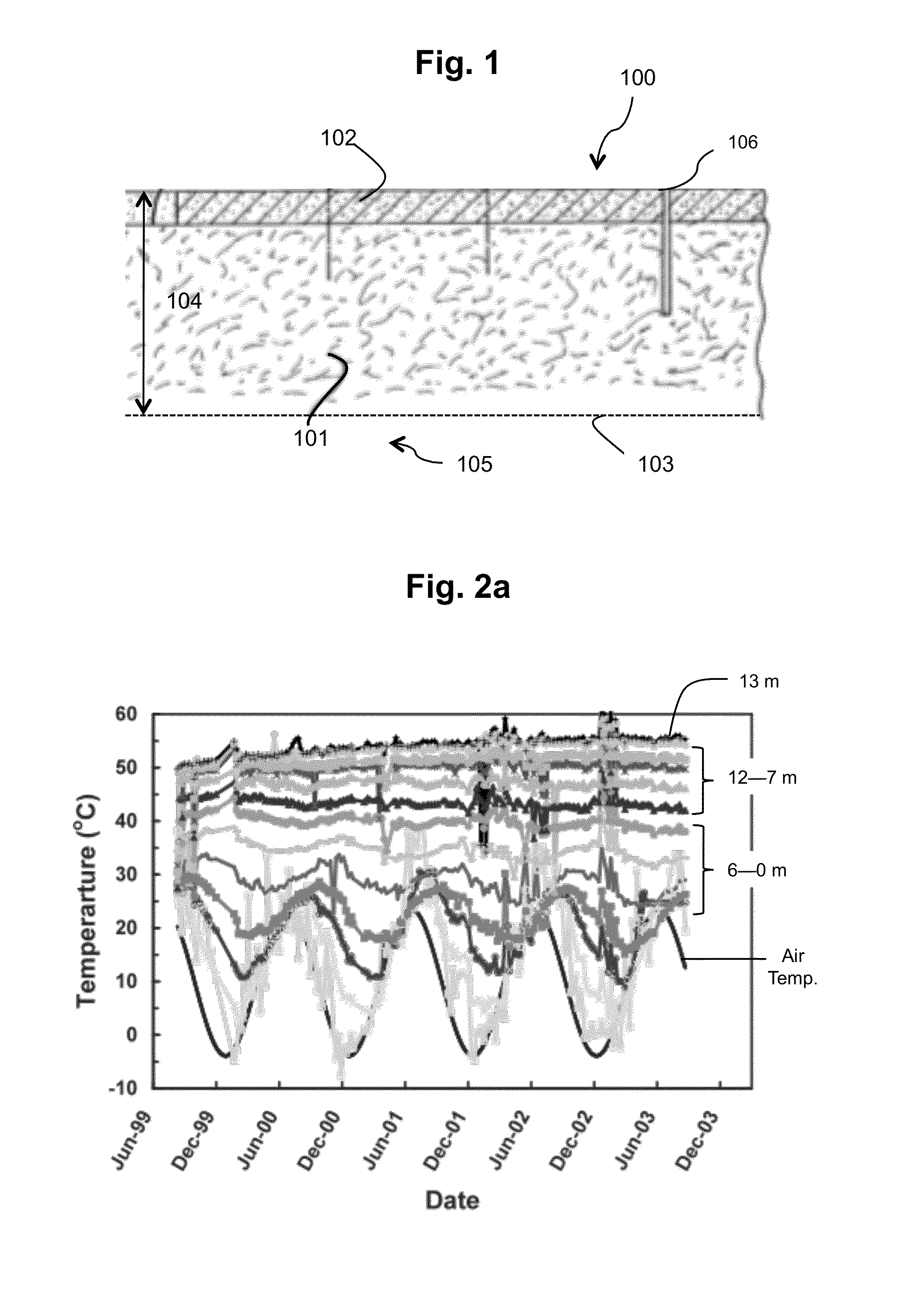Systems and methods for temperature control and heat extraction from waste landfills
a landfill and temperature control technology, applied in indirect heat exchangers, exothermal chemical reaction heat production, lighting and heating apparatuses, etc., can solve the problems of less information available on landfill heat generation, affecting the efficiency of landfill heat generation,
- Summary
- Abstract
- Description
- Claims
- Application Information
AI Technical Summary
Benefits of technology
Problems solved by technology
Method used
Image
Examples
Embodiment Construction
[0028]As described above, heat is generated as a result of biochemical processes and decomposition of organic components in wastes as well as chemical / biochemical transformation of various components in wastes. Field measurements of temperatures within landfills reveal spatial variations of temperature as a function of depth.
[0029]FIG. 2a illustrates an example of temporal variations in temperature with location at a given depth of waste landfill 100. Temperatures at relatively shallow depths of waste mass 101 (e.g., at the surface as well as near the edges / perimeter of the waste mass) undergo seasonal fluctuation similar to variability in earth temperature, which is shown in FIG. 2b. Turning to FIG. 2b, ground surface 203 provides range T of temperatures from low temperatures 201 (e.g., 0° C.) to elevated temperatures 202 (e.g., 40° C.). Elevated temperatures approach temperature 204, which is the mean annual earth temperature, as the measurement depth increases. Range T of tempera...
PUM
 Login to View More
Login to View More Abstract
Description
Claims
Application Information
 Login to View More
Login to View More - R&D Engineer
- R&D Manager
- IP Professional
- Industry Leading Data Capabilities
- Powerful AI technology
- Patent DNA Extraction
Browse by: Latest US Patents, China's latest patents, Technical Efficacy Thesaurus, Application Domain, Technology Topic, Popular Technical Reports.
© 2024 PatSnap. All rights reserved.Legal|Privacy policy|Modern Slavery Act Transparency Statement|Sitemap|About US| Contact US: help@patsnap.com










